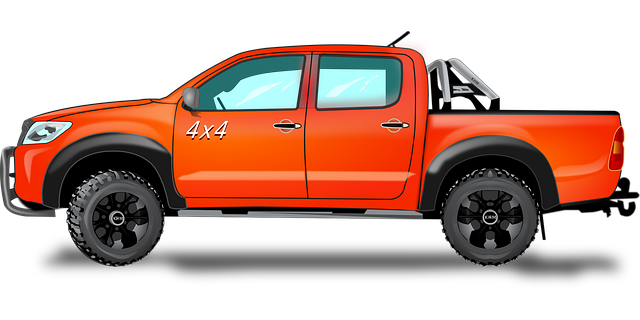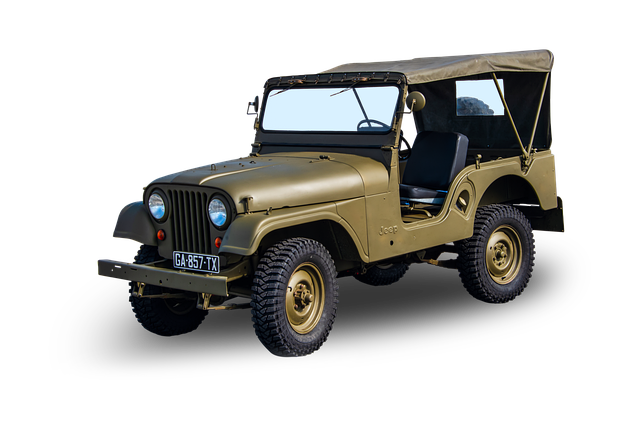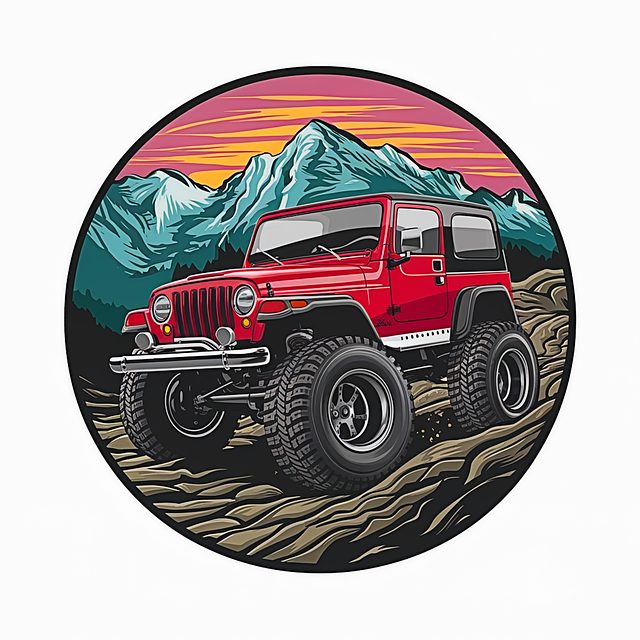In McCallen, understanding brake caliper function and types (fixed vs. floating) is crucial for 4×4 owners navigating challenging off-road terrain. Regularly inspect calipers for wear, corrosion, and noise, addressing issues promptly to ensure safe, reliable braking. Invest in proper tools like socket wrenches, torque wrenches, and pin extractors for accurate repairs. Diagnose problems through visual inspections, brake fluid checks, and caliper testing. Safely disassemble and reassemble caliper components with meticulous attention to detail. Maintain calipers through regular cleaning, lubrication, and preventing common mistakes for optimal performance during off-road adventures in McCallen.
“Unleash your 4×4’s full potential with a deep dive into brake calipers – the unsung heroes of off-road safety. This comprehensive guide, tailored for McCallen workshops and adventurous 4×4 enthusiasts, demystifies these critical components. From identifying common issues like seized pistons or worn pads to mastering safe disassembly and reassembly, you’ll discover essential tips for successful repairs. By understanding brake calipers, you’ll enhance your overland 4×4’s performance and ensure a smoother, safer journey.”
- Understanding Brake Calipers: A Basic Overview for 4×4 Enthusiasts
- Common Issues with Land Over 4×4 Brakes and How to Identify Them
- Tools Required for Caliper Repairs in a McCallen Workshop
- Step-by-Step Guide to Diagnosing and Repairing Your 4×4 Brake Calipers
- Best Practices for Safely Disassembling and Reassembling Caliper Components
- Maintenance Tips and Common Pitfalls to Avoid During Overland 4×4 Repairs
Understanding Brake Calipers: A Basic Overview for 4×4 Enthusiasts

Brake calipers are a fundamental component in any 4×4 vehicle, including those used for overland adventures in McCallen. They are part of the brake system responsible for clamping down on the vehicle’s rotors, thereby slowing or stopping its wheels. Understanding how calipers work is crucial for anyone interested in performing basic overland 4×4 repairs.
For 4×4 enthusiasts, knowing the basics can help when navigating challenging terrain. Calipers come in various types, each with unique features and benefits. Some common designs include fixed and floating calipers, each offering different advantages in terms of heat dissipation, maintenance needs, and overall performance. By familiarizing themselves with these components, McCallen’s 4×4 owners can enhance their off-road experiences, ensuring their vehicles are ready for any obstacle that comes their way.
Common Issues with Land Over 4×4 Brakes and How to Identify Them

Overland 4×4 brakes can present unique challenges, especially when venturing off-road. Common issues include worn or corroded calipers, which can lead to reduced braking power and even complete failure. This is a significant concern for MCALLEN residents often navigating rugged terrain. Identifying these problems early is crucial for safe overland travel.
Keep an eye out for signs like increased brake pedal travel—requiring more effort to press—or noticeable reduction in stopping distance. Caliper noise, such as squealing or grinding, is another indicator. Regular maintenance and timely repairs are tips for overland 4×4 owners in MCALLEN to ensure their vehicles remain capable of tackling diverse road conditions.
Tools Required for Caliper Repairs in a McCallen Workshop

When tackling brake caliper repairs in a McCallen workshop, the right tools are essential for a smooth and successful process. For overland 4×4 enthusiasts, who often find themselves in remote locations, having the appropriate equipment is crucial. Basic tools include a set of socket wrenches in various sizes, a torque wrench to ensure precise tightening, and a pair of pliers for gripping and handling small components.
Additional specialized tools may be required depending on the caliper design and the specific repair needed. These could range from piston return springs, which require a spring compressor, to special caliper pins that demand a pin extractor. These tools, while seemingly niche, are vital for ensuring the job is done right, especially when maintaining the reliability of your 4×4’s braking system in the harsh conditions often encountered during overlanding adventures.
Step-by-Step Guide to Diagnosing and Repairing Your 4×4 Brake Calipers

Diagnosing and repairing your 4×4 brake calipers is a crucial step in ensuring safe and efficient overland travel in McCallen. Here’s a simple, step-by-step guide tailored for those tackling overland 4×4 repairs. Begin by visually inspecting the calipers for any signs of damage or wear. Look for cracks, corrosion, or misalignment, as these could indicate issues that require immediate attention. Next, check the brake fluid levels and condition; old or contaminated fluid can cause caliper problems. If you notice any abnormalities, consult a professional for further evaluation.
Proceed to test each caliper’s operation by lifting the vehicle and applying pressure to the brakes individually. This will help identify stuck or malfunctioned calipers. If one caliper fails to engage properly, it could be due to worn pads, contaminated fluid, or a seized caliper piston. Once identified, address the issue promptly. Replace pad wear, flush the brake fluid if necessary, and lubricate caliper components as recommended by your vehicle’s manufacturer. For more complex issues like a seized caliper, consider seeking expert assistance to avoid further damage. These tips for overland 4×4 repairs in McCallen can help you maintain optimal braking performance during your off-road adventures.
Best Practices for Safely Disassembling and Reassembling Caliper Components

When performing overland 4×4 repairs in McAllen, safe disassembly and reassembly of caliper components are crucial for both effectiveness and safety. Begin by ensuring all necessary tools are at hand—including jack stands, impact wrenches, and a good set of sockets—before lifting the vehicle. Next, carefully separate the caliper from the brake rotor, using a pry tool to gently lever it away without damaging either part. Once the caliper is free, lay it out on a clean workspace, allowing you to inspect for any wear or damage.
Reassembly requires meticulous attention to detail. Ensure all pins, springs, and pads are in place and properly aligned before securing the caliper back onto the wheel hub. Tighten all hardware to the manufacturer’s specified torque settings using your impact wrench. Remember, proper lubrication of pins and slides can significantly enhance caliper performance and longevity, so don’t skip this vital step. These tips for overland 4×4 repairs in McAllen will help ensure that your brake calipers function optimally, enhancing both safety and the overall driving experience.
Maintenance Tips and Common Pitfalls to Avoid During Overland 4×4 Repairs

When performing overland 4×4 repairs in McAllen, maintaining your brake calipers is paramount to ensuring safe and smooth driving. Regular inspections are crucial; check for signs of wear, corrosion, or damage. Cleanliness is key; remove any dirt or debris that might accumulate, as this can lead to premature wear. Remember, proper lubrication of caliper pins and slides can prevent rust and facilitate smoother operation.
Among common pitfalls to avoid during these repairs are neglecting to torque caliper bolts adequately, which can result in unpredictable braking performance. Over-tightening can also damage components. Always follow the vehicle manufacturer’s specifications for torque settings. Another frequent mistake is using incompatible replacement parts; ensure you have the right calipers and accessories specific to your 4×4 model. Lastly, avoid ignoring any unusual noises or pulling sensations during braking, as these could indicate serious issues that require immediate attention.
Brake calipers are a critical component of any 4×4 vehicle, ensuring safe and controlled stops during rugged overlands. By understanding common issues, having the right tools, and following step-by-step guides, McCallen workshops can efficiently diagnose and repair these essential parts. Adhering to best practices for disassembly and reassembly, along with regular maintenance tips, will help avoid pitfalls and ensure optimal performance during overland 4×4 repairs, making your next adventure smoother and safer.



